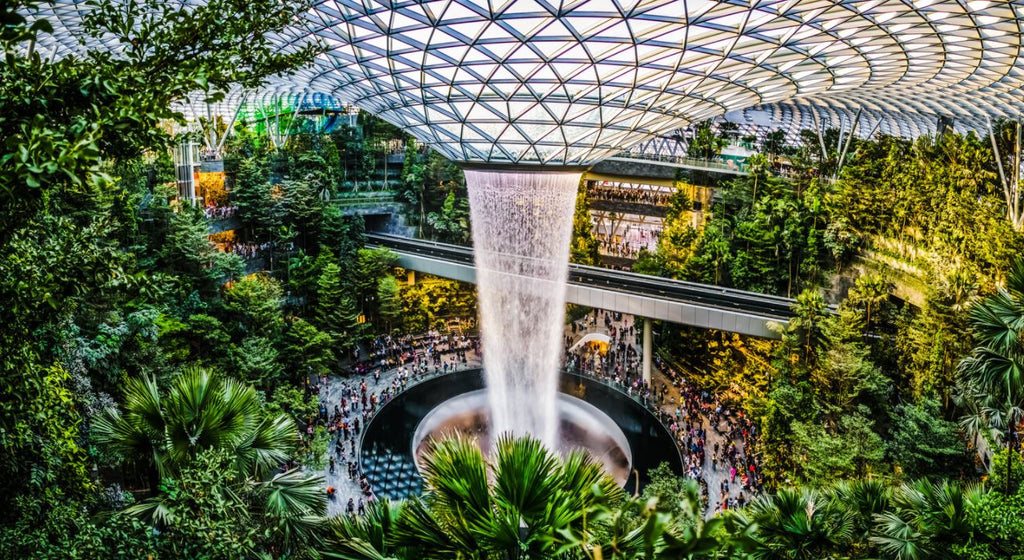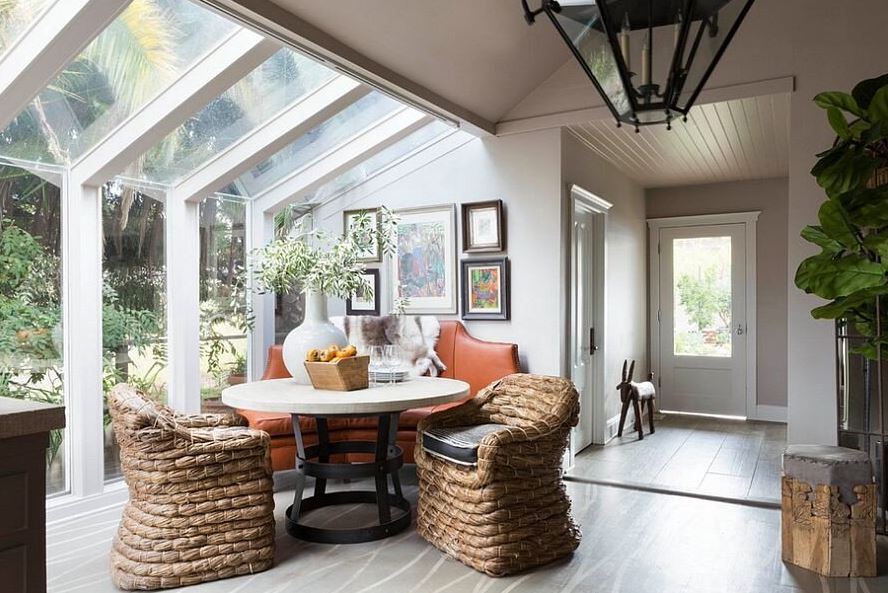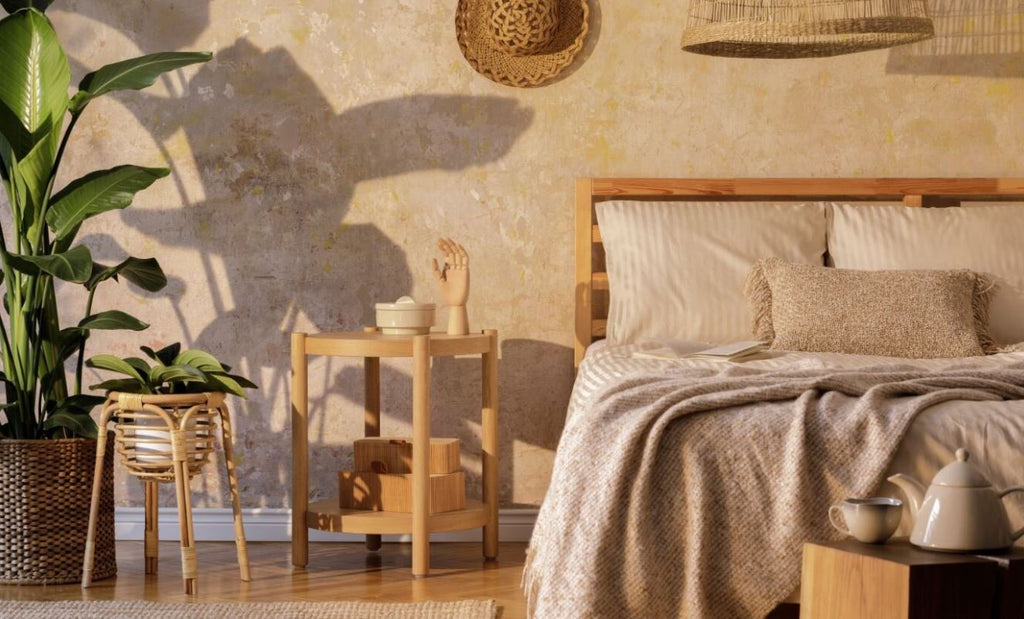Biophilic Interior Design Style
When we think of ways to relax or recharge, the first thing that comes to mind is connecting with nature. Listening to the sound of waves crashing on a beach, marveling at mountain views, or simply just taking in fresh air outdoors - all these have been widely accepted as bringing us peace and tranquility. With the world forced to spend time indoors due to the pandemic, it is therefore not surprising that homeowners are looking for creative ways to bring the feel of nature inside.
What is Biophilia?
The term ‘biophilia’ was first coined by psychologist Eric Fromm and eventually popularized in the1980s by American biologist and author E.O. Wilson, which means “an innate and genetically determined affinity of human beings with the natural world”. In architecture, biophilic design is an approach that seeks to integrate nature in the design with the aim of improving the end user’s quality of life. A true biophilic design aims to create a natural environment that will contribute to the health and productivity of the people within. With its perceived benefits on people’s well-being, biophilia has been applied all over the world in improving urban landscapes, offices and health centers. Most recently, Singapore made headlines with its Jewel Terminal at Changi Airport, which houses a canopy forest with a 131ft slab of water cascading through the open roof, a perfect example of how biophilic design is flourishing in urban areas.

Implementing Biophilic Design in your Home
Fortunately, biophilic design can be achieved even if you don’t have room for a waterfall or mini rainforest in your home! Through careful redesign, decoration and selection of materials, there are simple ways you can incorporate and mimic natural elements to achieve a connection to nature in your space.
-
Play with light and ventilation - the importance of a well-lit and open home cannot be stressed enough, and it therefore follows that the presence of natural light and air is one of the most important components of biophilia. Having an abundant exposure to natural light uplifts one’s mood considerably and brings in positive energy.
In design, this is achieved through strategic placements of many windows, high ceilings and sliding doors. Arranging seating areas and common rooms in a way that best maximizes the daylight will reap the most benefit.

-
Use of greenery - Nothing says the great outdoors better than lush greenery in your space, and that is why another essential component to biophilic design is the presence of plants. Daylight and greenery obviously work very well together, and the combination of both can only result in a positive impact to its end users. Plants not only enhance the overall appearance of a space, they can also help in improving air quality and set a relaxing ambiance that helps to reduce stress and boost creativity.
If you have a big enough space, having an atrium or vertical wall will do a world of wonder to your home.

On a smaller scale, a similar effect can be achieved by bringing in a variety of plant life. You can grow an assortment of houseplants, blooms and fresh herbs easily in an apartment. Nowadays, air purifying plants are becoming very popular because they bring in both a touch of color and clean air, and they are also low maintenance. English Ivy, Spider Plant and Peace Lily are among the top plants in this category.

The key is to play around with various forms, sizes and types - a creative arrangement and mix will bring the feel of the outdoors into your space.

-
Incorporating natural materials - wood is one of the most widely used materials in biophilic design due to its functionality and versatility. Its rustic appearance supports a more visual connection to nature and stimulates the senses, giving a feeling of warmth, comfort and an improved sense of well-being. In commercial spaces, specifically in hospital lobbies, wood is used to create calm and reduce stress in both visitors and patients.
For the home, you can use wood in varying scales and applications. Use it for your flooring, walls, or add on to your space with furniture - cabinets, dressers, tables and chairs are popular selections. Because the possibilities are endless, it is easy to find the kind that suits your taste and budget.

Another popular natural material is stone , which you can use on the walls or as a floor accent on your walkways, balcony and bathroom. Combining it with wood results not only in a visually stunning sight; more importantly, it also contributes to the natural feel of the space.

-
Earthy hues and patterns - Use a color palette derived from nature - think beige, greens and blues. This year’s color trends are geared towards the theme earthy and harmonious, obviously reflecting the sense of peace and calm that everyone hopes for after a chaotic 2020. The paint company, Behr , released its color of the year as Canyon Dusk, complete with 21 palettes that aim to elevate your comfort zone.

Image via Architectural Digest
Other than paint, creative use of wallpaper and tiles can also be used to achieve a nature-like ambience in your homes. If your space doesn't have any views of nature, a botanical print wallpaper or one with a mountain view can very well do the trick.

Image via Pinterest- Forest Homes
-
Water features - Water elements provide an immediate calming effect, from both a visual and auditory perspective. Those with bigger spaces can dedicate a koi pond or a wall fountain; smaller fountains placed in strategic places can be used instead for homes with limited spaces.

Now, more than ever, there is a bigger need to harness the feel of a natural environment in our homes. Obviously, not all spaces can accommodate the elements in a true biophilic design, especially in urban settings where space constraint is a main concern. But with a little creativity, you can choose your favorite elements from nature and incorporate several biophilic components in your space. This will optimize the benefits that each one brings to the table and create a multi-sensory experience. The result will be a place that gives you the best of the natural world - a place that makes you feel good on the inside, and looks as good on the outside.

